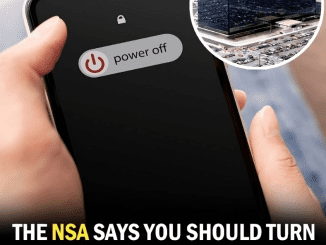We’ve all been there—you’re walking on a windy day, working in the garage, or applying makeup, and suddenly… ouch. Something’s in your eye. It stings, it blurs your vision, and it instantly becomes your top priority.
But before you panic or start rubbing your eye (please don’t), let’s walk through exactly how to remove a foreign object from your eye quickly, safely, and without causing more damage.
Because the wrong move could turn a minor irritant into a major injury.
What Counts as a Foreign Object in the Eye?

A foreign object is literally anything that doesn’t belong inside or on your eye—whether it’s dust, sand, metal, glass, or even an eyelash.
Most commonly affected areas:
- Cornea: The transparent dome over the front of your eye.
- Conjunctiva: The thin, clear tissue covering the white of your eye and the underside of your eyelids.
Even though it might feel like something’s stuck “behind” your eyeball, that’s anatomically impossible. But it can definitely get stuck under the eyelids or on the surface—and cause plenty of discomfort.
Common Symptoms of Something in the Eye
Wondering if there’s really something in there, or if it’s just irritation? Here are the classic signs:
- Sudden pain or a sharp sensation
- Feeling like something’s stuck
- Redness or bloodshot appearance
- Tearing up a lot
- Light sensitivity
- Blinking constantly
- Blurred vision
In rare, more severe cases (especially involving high-speed impacts), you may see:
- Discharge of blood or fluid from the eye
- Decreased vision
- Sharp embedded objects
Video : How to remove a foreign body from the eye
Emergency? Here’s When to Get Help Immediately
If any of these apply, don’t wait—get medical help fast:
- The object is sharp, metallic, or glass
- It was moving fast when it entered your eye (e.g., grinding wheel, explosion)
- You can’t close your eye
- There’s bleeding or fluid leaking from the eye
- You feel pressure or a serious ache
- The object is clearly embedded in your eyeball
In the meantime:
- Don’t touch or rub your eye
- Cover the eye gently with a clean cloth or bandage
- If the object is large, shield it with a paper cup
- Cover your other eye too—moving one eye moves them both
How to Safely Remove a Foreign Object at Home
If it’s a minor particle like dust, an eyelash, or makeup debris, and you don’t see signs of serious injury, you can try these steps.

Step 1: Wash Your Hands
Before you touch anywhere near your eye, wash your hands thoroughly with soap and warm water.
Step 2: Use Bright Lighting and a Mirror
Good visibility is key. Sit down in a stable position with a mirror, and maybe recruit someone to help if you’re struggling to see.
Step 3: Inspect the Eye
Look in all directions:
- Look up and pull your lower eyelid down
- Look down and gently lift the upper lid
Roll your eye around slowly—you might spot the object shifting.
Step 4: Flush with Clean Water
This is the most effective and safest first step for small particles:
- Use an eyecup, saline wash, or a glass of clean, lukewarm water
- Submerge your open eye and blink repeatedly
- For kids, gently pour warm water across their open eye while you hold the eyelid open
Step 5: Blink It Out
Sometimes pulling the upper eyelid over the lower lid helps dislodge something stuck underneath. The lashes from the lower lid may brush the particle away.
Step 6: Use a Damp Swab (If Safe)
If you can clearly see the object (like a speck of sand), and it’s not embedded, you can use the tip of a damp cotton swab or clean cloth to gently remove it.
Avoid using fingers or tweezers—you’re more likely to injure the eye.
Still Feels Like Something’s in There? See a Doctor

Sometimes, even if you think you got it out, your eye might still feel irritated. Here’s when to go get checked out:
- You still feel pressure or discomfort
- Your vision is blurry after removal
- You notice persistent tearing, redness, or swelling
- There’s any sign of corneal cloudiness or abrasion
What Happens at the Doctor’s Office
An eye care professional may:
- Use numbing drops for comfort
- Apply fluorescein dye to check for corneal scratches
- Use magnifying tools to look deeper
- Remove particles with safe instruments or by flushing
If there’s a corneal abrasion:
- You’ll get an antibiotic ointment to prevent infection
- Pupil-dilating drops may be prescribed for larger scratches
- OTC pain relievers like acetaminophen may help
For serious injuries (like intraocular objects), you may need imaging (e.g., CT scan) or emergency surgery.
Recovery Timeline
- Minor irritants: A few hours to a day
- Scratches: 2–3 days to heal fully
- Deeper injuries: Can take weeks and may leave lasting damage if not treated
Organic material like soil or plant debris increases the risk of infection—especially if it’s not removed cleanly.
Video : Removing a Foreign Particle from Eye – Quick & Safe Method! 👀🧐
How to Prevent Foreign Objects from Entering the Eye
You can’t control everything, but you can protect your eyes with these smart moves:
- Always wear safety goggles when working with tools, grinding, hammering, or using chemicals
- Use swim goggles in pools or sandy water
- Avoid rubbing your eyes, especially with dirty hands
- Be cautious when applying eyeliner, mascara, or false lashes
- Keep contacts clean and never sleep in them unless prescribed
Conclusion: Your Eyes Are Precious—Protect Them Like It
A tiny piece of sand or metal might seem harmless—but in the wrong spot, it can threaten your vision. The next time something lands in your eye, stay calm, follow these safe steps, and know when to seek help.
Your sight is worth protecting—so handle your eyes with care, and never hesitate to get professional attention if things feel off.


